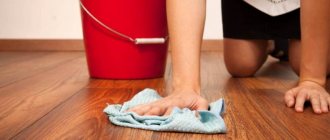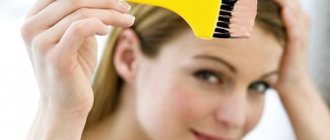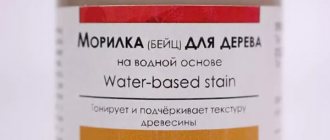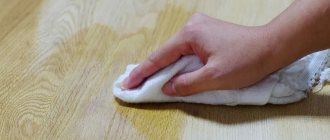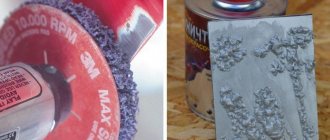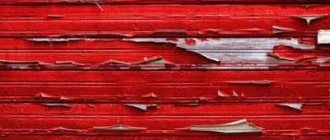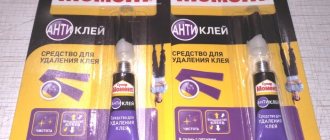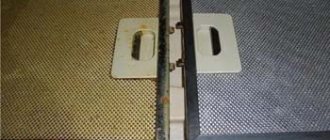One of the most popular floor coverings is linoleum, due to its affordability and variety of patterns. You always want your floors, if not to shine like new, to at least look clean and free of stubborn dirt. And the dirt can be so corrosive and disgusting!
At the moment, you can find a bunch of household bleaches and floor cleaners on store shelves. It doesn't even make sense to name these brands. But once you read this article, it becomes clear that all these painfully well-known bottles are not able to help when it comes to various stains, and not just cleaning the floor. So, below are the contaminants and the ways you can easily get rid of them with your own hands, without using expensive and useless mass-market products.
Warning.
Keep in mind that there are products that are not recommended for cleaning linoleum. These include: alkaline solutions, because they make the linoleum coating brittle; abrasives and dry cleaning powders, because after their use, microcracks and chlorine bleaches may appear, because they wash the paint out of the coating. You should also use products based on various solvents with caution, as they can not only remove dirt, but can also damage the linoleum coating.
Cleaning from fat.
If the linoleum is stained with grease, then you will need a dishwashing detergent (any) that copes well with this type of contamination. In a bucket for washing the floor, dilute a couple of drops of dishwashing liquid, add a tablespoon of ordinary baking soda and fill with warm water. Once this has all dissolved into soapy water and foam, wipe the greasy areas on the linoleum. Then drain the foamy dirty water, replace it with clean water and wipe the linoleum clean. If the grease has become embedded in the floor, then first try treating it with turpentine. Wear gloves and be careful when handling this substance!!
If the above advice does not satisfy you with its results, we suggest getting rid of fat using a soap solution and vodka (or alcohol). This method helps remove the most severe and persistent stains on linoleum. This advice is especially good for owners of light-colored linoleum, because... grease and dirt make its coating yellowish and untidy. You need to dilute 200 ml of vodka in 1 liter of water and add one teaspoon of dishwashing detergent. Then apply the resulting liquid to dirty spots and rub. When the stains come off and are washed off, it is advisable to wash the treated floor clean with clean water.
If this recommendation does not bring the desired result, then you can try removing the grease using a tile surface cleaner. You need to dilute this product in the required amount of water according to the instructions and wash dirty areas of the floor with it. And then, as usual, wipe the floor with clean water.
Types of pollution
In practice, stains on linoleum are removed using different methods. The choice of the latter largely depends on the nuances of the origin of the spots and how long ago they were formed. In order to choose the right cleaning product, it is important to know why stains appeared.
There are the following types of linoleum coating contamination:
- fat;
- speck of brilliant green, iodine;
- traces of various food products;
- felt-tip pens, ink;
- wax, paraffin;
- gum;
- rust;
- dye.
Attention! If pockets of dirt appear on their own, on the eve of the cleaning procedure, you need to determine the real reason for their formation.
When caring for synthetic flooring, it is advisable to use only soft materials that are gentle on detergents Source cleanadvice.ru
Cleaning linoleum from brilliant green and iodine.
These types of stains are easiest to remove fresh and immediately! The very first thing to do is to use a porous sponge to collect the spilled substance, but under no circumstances rub the stain with the sponge, but only absorb it! Remains can be blotted with a napkin. Now make a soap solution from water and washing powder and remove any remaining brilliant green or iodine. Already stubborn stains can be removed with alcohol-containing products.
Removing green stains from linoleum.
There is also a known method for removing unwanted stains using ordinary hydrogen peroxide. It is necessary to pour peroxide onto a cotton pad or cotton pad and treat the dirty area, and then wipe the floor with clean water. To avoid unwanted changes on linoleum from hydrogen peroxide, test it first on an inconspicuous piece of the floor.
You can remove iodine stains with baking soda. Pour baking soda onto a damp cloth or sponge and cover the stain with this solution. If the stain has become noticeably lighter, but has not gone away completely, repeat the procedure again. Sometimes rubbing the stained area with half a potato helps remove iodine.
Green paint stains respond well to nail polish remover; ammonia (ammonia) is also used. Apply the liquid to a cotton pad and wipe the dirt with it. And after this procedure, wipe the floor with clean water.
You can also remove a stain of brilliant green using camphor alcohol. It is easy to find it in a pharmacy. Apply this product to a cotton swab and wipe the stain, and then wash the floor clean.
General information
"Pedigree" of the spot
Before you start removing the stain, you need to find out what it is. Where does it come from? After all, the cause of stains can be food products - they leave greasy or coloring stains. Children can stain linoleum with felt-tip pens, spill ink, ride a bicycle and leave rubber marks, forget chewing gum and accidentally smear it. Traces of green paint and iodine can also often be found on linoleum-covered floors. Animals also contribute to pollution. Traces of their urine also appear if they are not noticed in time. After repair, linoleum always needs to be cleaned from a variety of stains: rust, paint, and tape. Linoleum can please its owners for 15 years. Therefore, you should take care to keep it clean. How can you remove stains from linoleum?
Secret tips for getting rid of stains
To clean linoleum, of course, you will have to use chemicals, powders and solutions.
But no matter what the age of the stain, you need to start treating it with a solution with the addition of ordinary laundry soap (preferably with a high percentage of alkali). Sometimes this procedure and the effort involved are enough to get rid of unwanted jewelry. If the soap fails, other helpers will have to join the battle for cleanliness. You can use substances that are very active in such a fight: turpentine, solvent, alcohol, kerosene, gasoline. Attention! It is necessary to check in advance the reaction of the floor covering to the effects of chemicals in some inconspicuous place. It is possible to ruin the linoleum by adding new stains.
After making sure that the chemical will not cause harm, you should dilute it in water in proportions - one part of water to one part of the drug. Using soft rags, sponges or soft bristled brushes you can begin the cleaning process. After this, be sure to wash the linoleum with soap and water and wipe with a dry cloth.
Attention! Do not use very hot water when working. Floor coverings made of synthetic materials are susceptible to high temperatures.
Removing ink stains.
If you spill ink on the floor, use a melamine sponge as soon as possible. Try to rub softly and lightly so as not to damage the protective coating of the linoleum. And then you can treat the cleaned area on the floor with linseed oil and polish it with a silk piece of cloth. This way you will protect a possibly damaged layer of linoleum from microcracks and give it a fresh look.
Ink stain on linoleum.
In some cases, you can remove ink using a regular eraser. You just need to rub the stain.
To remove ink stains, you can use regular gasoline or turpentine. To do this, moisten a foam sponge with solvent and rub the stain.
If the stain is old and cannot be removed, then you can try rubbing the stain with a pumice stone. But you need to be aware that abrasives can damage linoleum.
Alkali
Some stains can only be removed with a concentrated alkali solution. Every home will probably have the following:
- laundry soap;
- soda ash or baking soda.
Laundry soap contains about 70% alkali, and soda in any format contains carbonates in its purest form. To remove stains, you can use a slurry of laundry soap locally - apply for 10-15 minutes and then rinse off. Soda can only be used as a solution - you should not rub the coating with it when dry, it will become dull, and scratches may be noticeable in daylight.
Cleaning from construction dust and dirt.
It happens that first they laid new linoleum, and only later did the repairs. And all the construction dirt and dust settled on the linoleum. In this case, after you have removed all the debris from the floor and noticed traces of putty, use a putty knife and carefully clean off the dried putty. It's faster and easier than trying to wash it with water and a rag.
When there are no hard-to-remove stains left on the linoleum, all you have to do is wash the floor several times to remove possible whitewash and dust. The water needs to be changed until it becomes clear after washing the floor. Do not forget that you need to change not only the water, but also be sure to rinse the rag after each wash, because... a dirty, unrinsed rag will itself stain clean water. If, after cleaning, it seems to you that the floor is clean, but has completely lost its shine and freshness, then rinse the floor one last time with clean water with the addition of vinegar or potassium permanganate.
Recommendations for caring for linoleum flooring
In order for linoleum to have a respectable appearance and look new for as long as possible, you should follow some recommendations for caring for it:
- The first time after laying the covering, cleaning should be done only using a dry method. It is recommended to immediately treat linoleum in rooms with high traffic volumes such as the hallway, kitchen and corridor with special protective polymer compounds. These products will protect the surface from dirty marks and stains. After the protective coating has dried, you can dry clean the floor using a vacuum cleaner.
- In the future, you can switch to wet cleaning using a washing vacuum cleaner or a damp cloth. You can add a small amount of detergent to warm water to clean linoleum. It is better to use compounds specifically designed for linoleum.
- If it is necessary to disinfect premises - hallway, corridor, bathroom, kitchen, it is necessary to choose non-aggressive antiseptic compounds or dilute them half with water.
- To “revive” the colors of old linoleum, it should be wiped with water and milk. For such a solution, the components are taken in equal parts.
Regular and properly cared for linoleum will keep the coating fresh for as long as possible.
- To make the coating shine, polishes, colorless mastics, potato broth, drying oil, and linseed oil are used. Drying oil or oil is applied to the linoleum using a napkin, and then rubbed in with a dry soft cloth - this procedure must be performed once every 5-6 months. These substances will not only enhance the colors of the material, but will also provide protection for it, since any foreign substance will be much easier to clean off from the surface.
- The chemical compositions used for cleaning must be compatible with each other, that is, not react or neutralize each other’s effects.
Dry cleaning of linoleum from dust and dirt
- If you plan to carry out wet cleaning, you must first clean the surface of dust, sand and small debris - this can be done with a broom, a special brush-mop or a vacuum cleaner. This will prevent damage to the coating by dirt particles that have abrasive properties.
- To ensure that there are no stains left on the linoleum after wet cleaning, which are especially visible on dark material, it should be wiped dry.
From all of the above it is clear that caring for this floor covering is not at all difficult. And stains that have arisen during everyday use can be cleaned using various methods, choosing one that is suitable for the material and method of application.
* * * * * * *
At the end of the publication, there is a useful informative video in which its author shares his secrets of caring for linoleum.
We remove the mounting foam from the floor.
Sometimes, during repairs, polyurethane foam gets onto the linoleum. To get rid of it, first of all, you need to let it dry. You shouldn’t touch it until it’s dry; it’s much more difficult to remove it this way than when it’s dried out. But when the foam has dried, you can cut it off with a knife or other sharp object, but not under the “spine”, but only the top layer, removing which you will definitely not damage your linoleum. Then soak a rag in water and apply it to the remaining foam. Give the foam time to soak. And then remove it from the floor surface.
Removing polyurethane foam from linoleum.
If this does not help, then contact a hardware store. They have special products for cleaning surfaces from foam. After carrying out such actions, as always, wipe the floor clean.
How to add shine?
To make linoleum shine, you need to do the following once every 30 days:
- rub it with drying oil,
- rub with linseed oil,
- rub with mastic.
You can choose any product, the result with regular care will be good.
Returning shine to new linoleum will give:
- protection with mastic (transparent),
- cleaning with a damp cloth (once every 3-4 days).
Protection and care will restore shine and extend the life of the coating by 3-5 years.
We use a melamine sponge to remove stains and dirt.
Lately, many people like to use a melamine sponge to remove stains and dirt. This sponge, without adding any chemicals or other folk remedies, can remove stains and dirt. To do this, you just need to moisten the sponge in water and wring it out, and then rub your stain.
Melamine sponge.
If you are unfamiliar with melamine sponge, then briefly we can say that it looks like a piece of light foam rubber, but in texture and feel it is a completely different material, hardness can be compared to glass or sandpaper, but upon contact with water the sponge becomes soft and pliable. Melamine is a synthetic material that resembles an eraser in action, only instead of a pencil, melamine rubs off even the most severe stains on surfaces made of various materials.
Before use, you need to place the sponge in a container with cold (do not heat the liquid) water, wait a few seconds until the product gets wet, and squeeze lightly several times. Now you can safely clean even the most difficult stains from wine, blood, and felt-tip pens.

